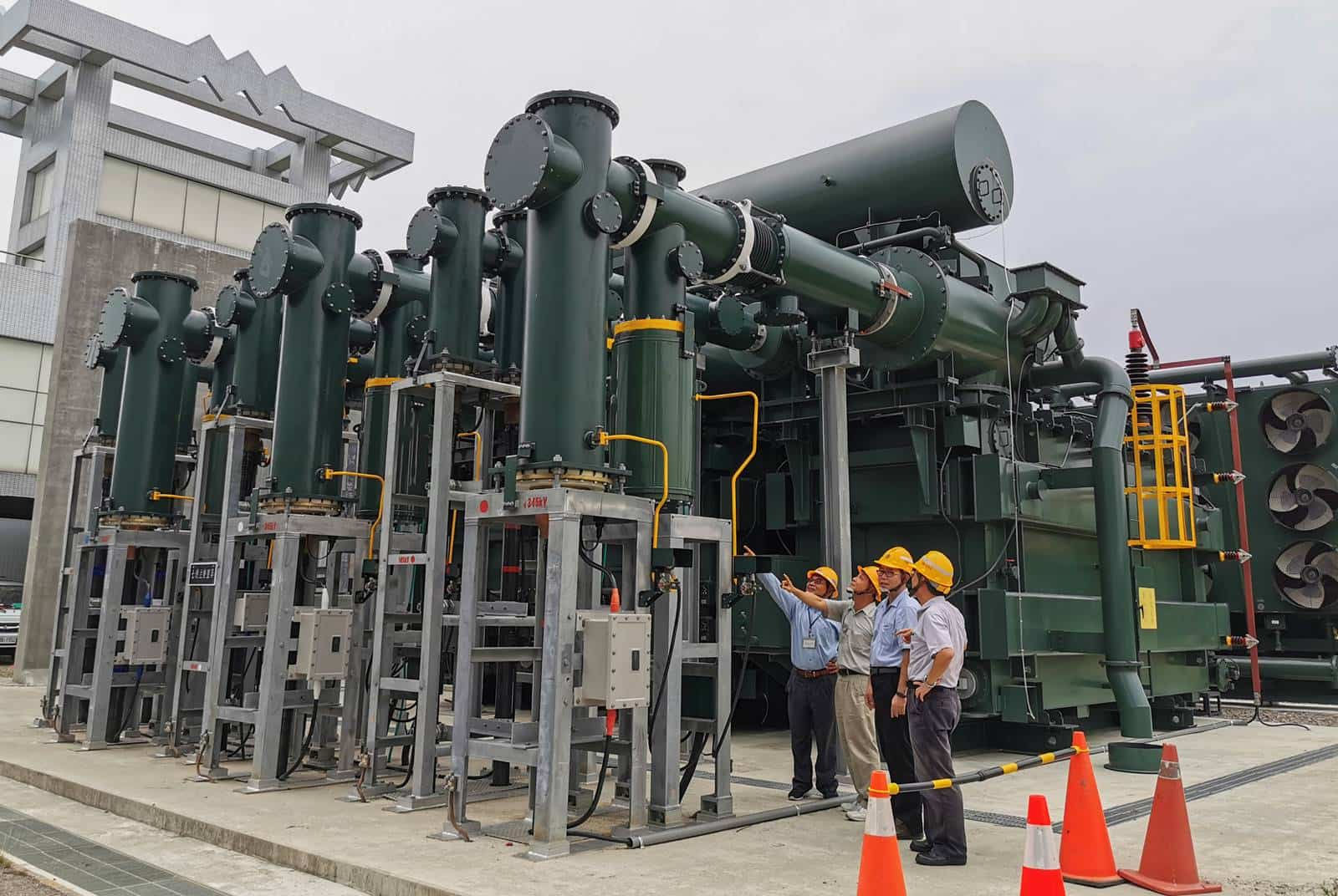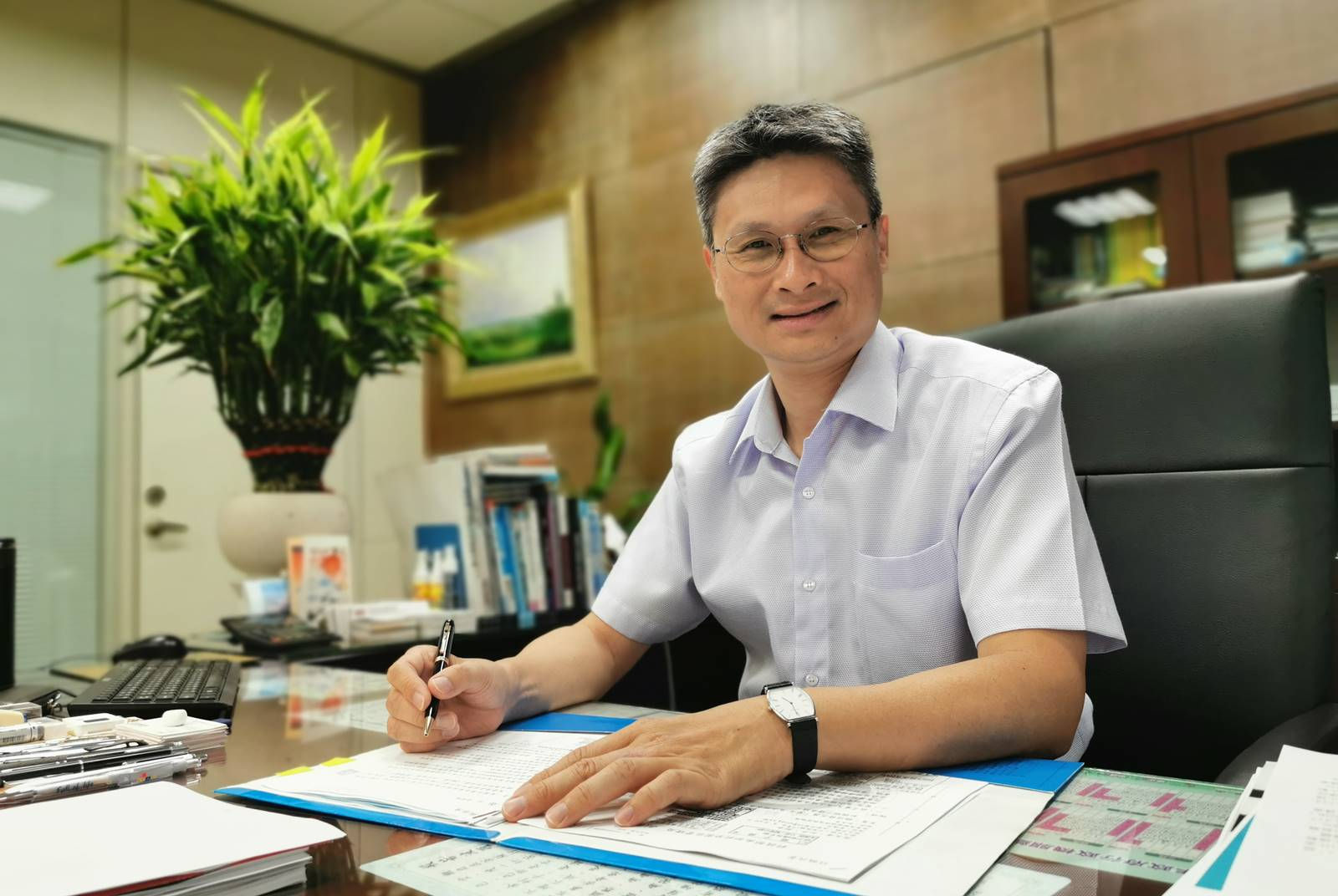Does Taiwan Have Enough Power for TSMC?

Source:Chien-Tong Wang
Taipower and the Southern Taiwan Science Park have been working overtime to satiate “power-hungry” TSMC. What is a “transformer” and why must it come online six months ahead of schedule? A look at last year’s energy use data may shock you.
Views
Does Taiwan Have Enough Power for TSMC?
By Hannah Chang, Liang-rong ChenFrom CommonWealth Magazine (vol. 703 )
This July, the stock prices of the Taiwan Semiconductor Manufacturing Co. (TSMC) have been soaring. On the 21st, the company’s overall market value surpassed NT$10 trillion. It was a milestone in the history of Taiwanese stocks.
Energy consumption across the country is also rising sharply. Due to the recent heat wave, at 1:50 in the afternoon on the 23rd of July, Taiwan used a record-shattering 38.02 million kilowatts of electricity—a milestone in its own right.
The two incidents share a common origin. TSMC's FAB-18, located in the Southern Taiwan Science Park (台南科學園區), boasts an array of Extreme Ultraviolet (EUV) equipment used to produce the second generation of 7-nanometer chips, as well as the new 5-nanometer chips.
During the second quarter of 2019, TSMC became the first semiconductor company in the world to achieve mass production with the EUV process, leaving Intel and Samsung in the dust. As the master of the world’s most advanced semiconductor technologies, TSMC’s sales and stock prices went through the roof.
However, EUV equipment is called electricity-consuming monsters for a reason; it is one of the factors contributing to Taiwan’s surge in power consumption.
According to the Ministry of Science and Technology (科技部), ever since TSMC’s FAB-18 initiated mass production, power consumption at the Southern Taiwan Science Park has spiked. Not only did it surpass the Hsinchu Science Park (新竹園區) toward the end of 2019, this June, power consumption reached a historic high of 1.53 million kilowatts, which is a year-over-year increase of 25%.
“The biggest difference between this year and last year is the advent of 5-nanometer chips,” says Chen-kang Su (蘇振綱), Deputy Director-General at the Southern Taiwan Science Park. TSMC holds up Taiwan’s economy. The United States and Japan both want to woo TSMC. Because of this, the Southern Taiwan Science Park will do everything in its power to make sure TSMC has all the water and power it could ever need.
A Hundred-strong Team Built a Transformer Six Months Ahead of Schedule
For this reason, the Southern Taiwan Science Park and Taipower were quick to initiate the Southern Taiwan Science Park Extra-high Voltage Transformer (Interim Transformer) Installation project . Employees at the Southern Taiwan Science Park and Taipower jokingly refer to it as an “escort mission”.
On the southwest side of TSMC's FAB-18 in the Southern Taiwan Science Park is a transformer that is painted dark green. It stands about two-and-a-half stories tall. This is Transformer Number Seven. It emits a deep hum, like a sleeping beast.
The Interim Transformer cost three hundred million dollars to build. It officially went online on June 12th. Pao-ling Chen (陳保陵), Deputy Director at Taipower’s Southern Region Construction Office (台電南區施工處), says that this adds half a million kilowatts of power to the Southern Taiwan Science Park’s output. Inside information reveals that although Transformer Number Seven was originally slated for operation in December, “everyone worked overtime to have it ready by mid-June.”

Taipower assembled a team of nearly a hundred experts from its civil engineering, electromechanical, and power transmission and transformation offices. They worked around the clock to get the job done. For key phases of the project, such as the power supply test, the team pulled twelve-hour shifts to work until nine in the evening.
“TSMC’s new plant naturally creates new demand for energy. The interim transformer was built to accommodate it,” Taipower spokesperson Hsu Tsao-hua (徐造華) says.
Power and Water for the Overachieving TSMC
However, even without Transformer Number Seven, the Southern Taiwan Science Park has a reliable power supply of 2.75 million kilowatts. It is much more than what the park needs at the moment. What is the hurry? Why did Taipower add half a million kilowatts, which is enough to power the entire southeastern seaboard, ahead of schedule?
One possible reason is that TSMC is known as an overachiever and often delivers ahead of schedule. Therefore, the infrastructure that feeds power and water to TSMC must also be deployed ahead of time.
“Their needs change on a dime,” says Su. TSMC has stipulated that for their five- and three-nanometer plants, the science park must carve out the land ahead of time. Since the 5-nm plant is being built on an archaeological site, the park had to preserve historical artifacts while doling out the land so that TSMC can start building. In the end, they were able to get it done four months ahead of schedule. Land for the 3-nm plant was slated to be delivered in April; in the end, TSMC was able to get it a month early.
“But before we give them the land they need, infrastructure for power and water must be in place. This way, the tech company can build their plant and purchase the equipment with peace of mind,” says Su.
Another factor may be gleaned from TSMC’s 2019 Corporate Social Responsibility Report, released this June.
In 2019, TSMC had planned to reduce their average power consumption per unit of product to 11.5% of what it was in 2010. In the end, not only did they fail to deliver, power consumption went up by a staggering 17.9%.
Power Consumption in 2019 Exceeded Target by 30%
Management at TSMC has always taken pride in fulfilling promises and delivering results. It is rare to see them fall short of the mark in such a spectacular manner.
“We were very surprised,” announced Bernstein, a foreign investment company. “What’s even more worrying is the fact TSMC itself may have been shocked by such a massive surge (in power consumption).”
In the CSR report, TSMC explains that the complexity of the new fabrication process “causes the average power consumption per unit of product in the sub-10nm fabrication plants to be double that of the 16-nm plants and above.”
However, Bernstein takes another point of view. TSMC announced its energy reduction target in June of 2019. It stands to reason they were confident of hitting the target at that time. But in just six months, they exceeded their target by thirty percent.
“What happened during the second half of 2019?” wonders Bernstein.
It may very well be that the rapid induction of EUV, not to mention the power requirements of the mass production process, were more than TSMC had anticipated.
During the second half of 2019, TSMC expanded their EUV capacity at a speed that shocked the global semiconductor industry. ASML Holding N.V., the sole provider of EUV equipment, said in their 2019 annual report that “sales from our biggest customer” grew ninety percent more than the previous year to a whopping 4.7 billion euros. The so-called “biggest customer” now contributes to forty percent of ASML’s overall revenue.
It is common knowledge that the “biggest customer” is TSMC. Because of this, ASML’s revenue from Taiwan grew by 169% in 2019 to 5.4 billion euros.
An analyst points out that ASML sold twenty-six EUV machines in 2019. Nineteen of them were bought by TSMC.
In the same annual report, ASML disclosed the power consumption level of the EUV machines for the first time. Bernstein ran the numbers and discovered that the latest EUV lithography technologies consume twenty times more power than the previous generation.
“How to reduce the power consumption of EUV has become our greatest challenge,” ASML says, admitting to this problem for the first time in their annual report.
Therefore, to get ready for TSMC’s advanced fabrication process and the larger number of EUV machines, Taipower is prepared to expand the transformer facilities behind Transformer Number Seven in the Southern Taiwan Science Park. Bidding is scheduled for August. Power production is slated for the end of 2025, when another 1.5 million kilowatts of power will become available.
Inside the Southern Taiwan Science Park, plans are being made to build another three transformers on the level of Transformer Number Seven, which is a 345 kilovolt (kV), 500 mVA Extra-high Voltage Transformer.
This giant new power grid, which will only be ready by the end of 2025, is clearly being built in anticipation of the next-generation 2-nanometer fabrication process. Though TSMC has yet to confirm a date for the mass production of 2-nm products, experts in the industry predict it will be around 2025.
Bernstein estimates that TSMC consumed 4.9% of Taiwan’s electricity in 2019. If they paid the standard fee offered to industrial consumers, TSMC’s electricity bill must have been around NT$32.9 billion.
Future Fabrication Will Use More Power
Shocking as this number may be, it will only go up, not down. The induction of EUV equipment means that TSMC will need so much more power, even the estimated output of the unfinished Lungmen Nuclear Power Plant would not have been able to make up the difference.

A foreign investment analyst points out that it is “very likely” that TSMC will consume more than ten percent of Taiwan’s power in the future.
Due to this, although Taipower and the administration are adamant that TSMC will not suffer from power outages in the foreseeable future, and TSMC Chairman Mark Liu(劉德音) has repeated the claim that TSMC does not want for power, Bernstein warns investors that “attention should be paid to the increase in power consumption and whether it will become a bottleneck to TSMC’s continued growth.”
Is TSMC worried about power outages and the rise in electricity costs? The official position is that TSMC reduced power consumption by three hundred million kilowatt-hours last year, which amounts to a cost reduction of 0.75 billion dollars. The company is also eager to tap into renewable energy. “The semiconductor industry is highly reliant on energy production. A reliable supply of electricity is very important,” says TSMC. “We are highly confident in the administration’s energy policies and planning!”
As the world’s most advanced data centers and smartphone brands put their trust in EUV technologies and TSMC’s plant in the Southern Taiwan Science Park, the question we need to ask is, does Taiwan have enough electricity to satiate TSMC? It is an important topic and one we need to keep our eye on in the years to come.
Have you read?
♦ TSMC Fab in US Part of Second Wave of the Trade War: Industry Insiders
♦ Taiwan’s Renewable Market Revolution Taking Shape
♦ Amidst Market Pessimism, Why Are Global Investors Bullish on TSMC?
Translated by Jack Chou
Edited by TC Lin
Uploaded by Judy Lu






